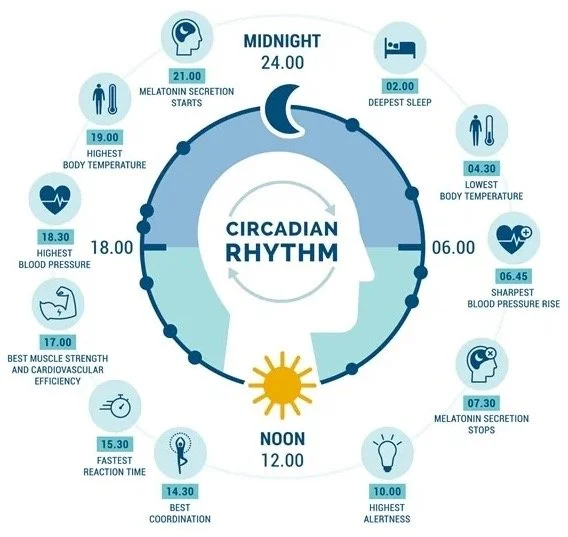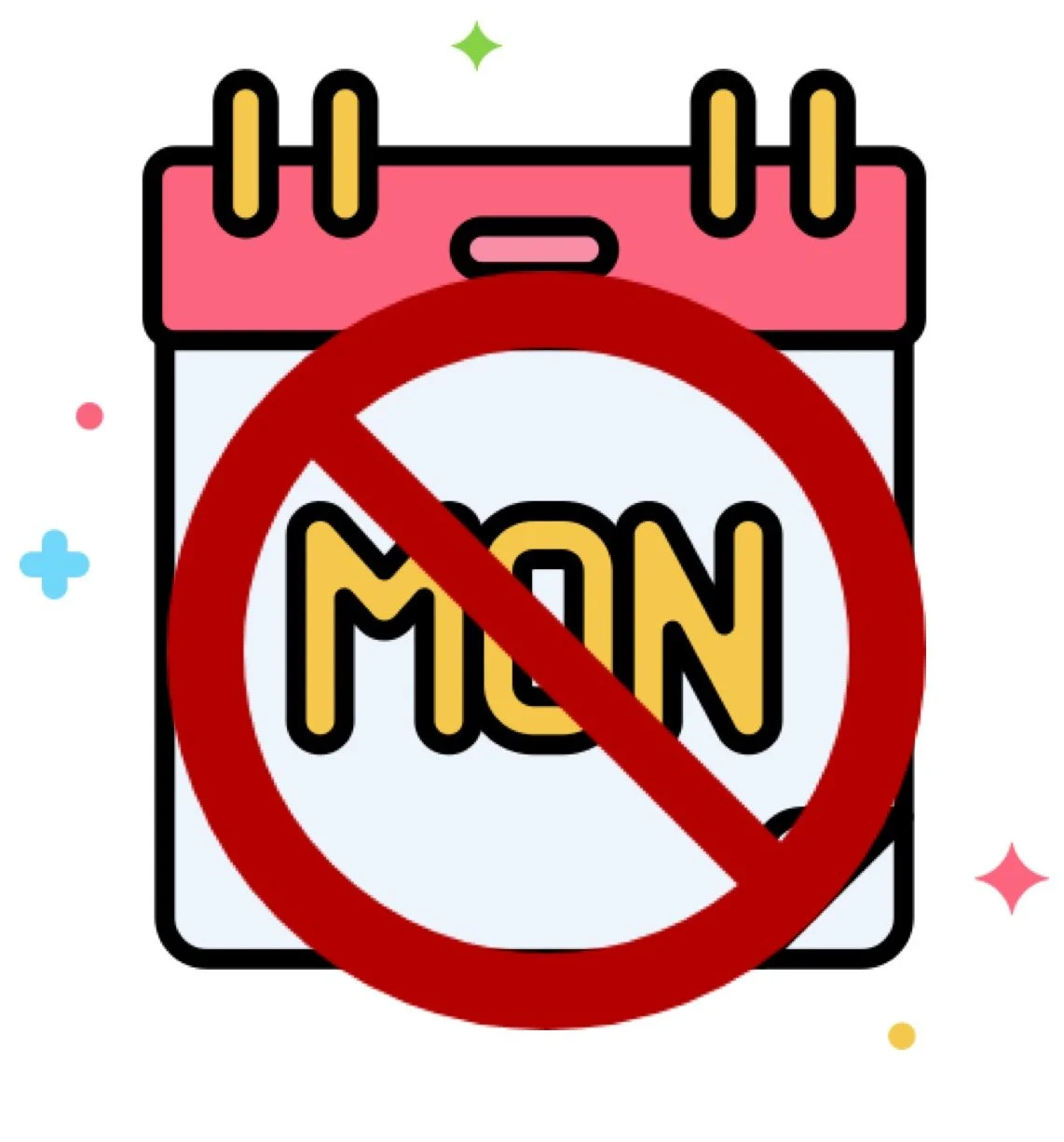Should Your Physiology Prioritize Your Workday Schedule?
Introduction
In the fast-paced world of executive professionals, optimizing productivity is often the ultimate goal. However, one crucial factor that is frequently overlooked is our own physiology. Understanding and aligning our work schedules with our natural biological rhythms can significantly enhance performance, decision-making, and overall well-being. As an academic neuroscientist, I aim to shed light on the importance of considering our physiological needs when structuring the workday.In the fast-paced world of executive professionals, optimizing productivity is often the ultimate goal. However, one crucial factor that is frequently overlooked is our own physiology. Understanding and aligning our work schedules with our natural biological rhythms can significantly enhance performance, decision-making, and overall well-being. As an academic neuroscientist, I aim to shed light on the importance of considering our physiological needs when structuring the workday.
The Science of Circadian Rhythms
Our bodies operate on a roughly 24-hour cycle known as the circadian rhythm. This internal clock regulates various physiological processes, including sleep-wake cycles, hormone release, and body temperature (Reppert & Weaver, 2002). Disruptions to this rhythm can lead to a myriad of health issues, ranging from sleep disorders to metabolic dysfunctions (Roenneberg, Wirz-Justice, & Merrow, 2003).
One of the key components of circadian rhythms is the production of melatonin, a hormone that promotes sleep (Pandi-Perumal et al., 2006). Melatonin levels rise in the evening, peak during the night, and decrease in the morning. This cycle is influenced by external cues such as light and temperature, which signal to our brain when it is time to wake up or wind down (Czeisler, 2013).
Disruption of the circadian rhythm, such as through shift work or excessive exposure to artificial light at night, can lead to “circadian misalignment.” This misalignment has been linked to various health problems, including increased risks of cardiovascular diseases, metabolic syndrome, and mood disorders (Wang et al., 2011). Understanding and maintaining a healthy circadian rhythm is crucial not just for sleep, but for overall health and optimal cognitive function.
Peak Performance and Cognitive Function
Research indicates that our cognitive abilities fluctuate throughout the day in accordance with our circadian rhythms. For most people, cognitive performance peaks in the mid to late morning, declines during the early afternoon, and then experiences a secondary, albeit smaller, peak in the early evening (Foster & Kreitzman, 2014). This pattern is influenced by the interplay of various factors, including alertness, body temperature, and cortisol levels (Smolensky & Lamberg, 2000).
The concept of “chronotypes” describes individual differences in circadian rhythms, where people can be categorized as morning types (larks), evening types (owls), or intermediate types (Roberts & Kyllonen, 1999). Morning types tend to perform better cognitively in the morning, while evening types perform better in the afternoon and evening. Recognizing your chronotype can help in tailoring your work schedule to match your peak performance times.
Executive functions, such as decision-making, problem-solving, and strategic planning, are at their highest during the morning peak (Schmidt et al., 2007). This is the ideal time for tackling complex tasks that require intense focus and critical thinking. Conversely, routine tasks that require less cognitive effort can be scheduled for the afternoon when cognitive performance dips.
The Impact of Sleep on Productivity
Sleep is a fundamental component of our physiological well-being and directly impacts our productivity. Quality sleep enhances memory consolidation, emotional regulation, and cognitive function (Walker, 2017). Chronic sleep deprivation, on the other hand, impairs executive functions and increases the risk of burnout (Lim & Dinges, 2010).
The glymphatic system, which is responsible for clearing waste from the brain, is most active during sleep. This system removes potentially neurotoxic waste products that accumulate during wakefulness, including beta-amyloid, which is associated with Alzheimer's disease (Xie et al., 2013). Therefore, adequate sleep is essential for maintaining cognitive health and preventing neurodegenerative diseases.
Executives often face demanding schedules that encroach on their sleep time. However, prioritizing sleep is not a luxury but a necessity for maintaining high performance. Ensuring a consistent sleep schedule, creating a sleep-conducive environment, and avoiding stimulants close to bedtime are essential practices for optimizing sleep quality (Carskadon & Dement, 2011).
Tailoring the Workday to Fit Your Physiology
To align your workday with your physiological needs, consider the following strategies:
1. Schedule High-Impact Tasks in the Morning
Leverage the morning peak in cognitive performance for tasks that require critical thinking and creativity. Studies show that individuals are more likely to solve problems requiring insight in the morning (Wieth & Zacks, 2011).
2. Take Strategic Breaks
Short breaks throughout the day can mitigate the decline in afternoon performance. Activities such as a brief walk, meditation, or even a short nap can rejuvenate cognitive function (Dinges, 1995). The Pomodoro Technique, which involves working for 25 minutes followed by a 5-minute break, has been shown to improve productivity and focus (Cirillo, 2018).
3. Optimize Sleep Hygiene
Prioritize sleep by maintaining a regular sleep schedule, creating a relaxing bedtime routine, and minimizing exposure to screens before bed (Cajochen et al., 2011). Blue light emitted by screens can inhibit the production of melatonin, making it harder to fall asleep (Chang et al., 2015).
4. Listen to Your Body
Pay attention to your body's signals and adjust your schedule accordingly. If you find certain times of the day more challenging, allocate less demanding tasks to those periods. This approach aligns with the “biological prime time” concept, which suggests scheduling tasks when you are naturally most alert (Bailey & Williams, 2014).
5. Create a Flexible Work Environment
Encourage a culture that values flexibility and acknowledges individual differences in peak performance times. This can lead to a more engaged and productive workforce (Pritchard et al., 2008).
Effective Workday Planning Tips
Now that we understand the importance of aligning our workday with our physiological rhythms, let's delve into practical tips for planning your workday more effectively:
1. Start Your Day Early
Beginning your day earlier than others can provide uninterrupted time for focused work. Research shows that people who start their day around 5 a.m. get the most done between 5 and 9 a.m. (Knutson et al., 2007). Morning productivity can be attributed to fewer distractions and higher levels of willpower (Baumeister et al., 1998).
2. Tackle Big Tasks First
Start your day with your top priority tasks. Motivation, energy, stamina, and willpower tend to decline throughout the day, so it’s best to handle significant tasks early (Muraven & Baumeister, 2000). This strategy leverages the concept of “eating the frog,” which means tackling the most challenging tasks first (Tracy, 2001).
3. Take Regular Breaks
The brain operates in approximately 45-minute cycles of attention followed by a need for a break (Linden, 2007). Take 15-20 minute breaks to reset and avoid stress responses. This aligns with the concept of ultradian rhythms, which are recurrent periods or cycles repeated throughout a 24-hour circadian day (Kleitman, 1963).
4. Drink Caffeine Strategically
Moderate caffeine intake during breaks can enhance neural function, focus, and flow (Smith, 2002). Caffeine acts as a stimulant by blocking adenosine receptors, thereby reducing feelings of tiredness (Fredholm et al., 1999).
5. Move During Breaks
Physical movement during breaks can boost creativity, learning, and memory networks (Ratey & Hagerman, 2008). Exercise increases levels of brain-derived neurotrophic factor (BDNF), which supports neurogenesis and cognitive function (Cotman & Berchtold, 2002).
6. Work Alone When Possible
Minimize distractions by working alone during high-focus periods (González & Mark, 2004). This practice helps reduce the cognitive load associated with task switching and interruptions (Monsell, 2003).
7. Institute No-Meeting Mondays
Start your week without meetings to prioritize your tasks and prepare for the week ahead (Fried & Hansson, 2018). This approach can improve productivity by allowing for uninterrupted work periods and reducing the cognitive fatigue associated with frequent meetings (Luong & Rogelberg, 2005).
8. Limit Email Checks
Avoid constantly checking emails. Set specific times for email checks to maintain focus on other tasks (Mark, Voida, & Cardello, 2012). Continuous email checking can lead to “email apnea,” a condition where individuals unconsciously hold their breath or breathe shallowly while reading or writing emails, leading to stress and reduced cognitive function (Fisher, 2016).
9. Plan Tomorrow Today
End your day by planning the next. This prepares your brain for upcoming tasks during your sleep cycles (Ericsson, Krampe, & Tesch-Römer, 1993). This practice can improve time management and reduce the cognitive load of decision-making (Gollwitzer & Sheeran, 2006).
10. Use Workouts as a Reward
Schedule workouts at the end of your workday to use residual energy and maintain a healthy work-life balance (Hansen, Stevens, & Coast, 2001). Exercise at the end of the day can also improve sleep quality by promoting physical fatigue and relaxation (Driver & Taylor, 2000).
11. End Work in the Evening
Avoid working in the evenings to ensure time for relaxation and personal activities, which enhances overall motivation and productivity (Pencavel, 2014). This practice supports work-life balance and reduces the risk of burnout (Maslach & Leiter, 2016).
Conclusion
In conclusion, understanding and respecting our physiological rhythms is crucial for maximizing productivity and well-being. By aligning work schedules with our natural biological patterns, executives can enhance their cognitive performance, make better decisions, and maintain a healthier work-life balance. As neuroscience continues to uncover the intricate connections between our physiology and productivity, integrating these insights into daily routines will become increasingly vital for achieving sustainable success.
By prioritizing our physiological needs, we not only optimize our workday but also pave the way for a healthier and more balanced life. The future of work lies in embracing the science of our bodies and minds, leading to a more productive and fulfilling professional journey.
References
Bailey, P., & Williams, T. (2014). The peak performance process: Managing your biological prime time. Self-Published.
Baumeister, R. F., Bratslavsky, E., Muraven, M., & Tice, D. M. (1998). Ego depletion: Is the active self a limited resource? Journal of Personality and Social Psychology, 74(5), 1252.
Cajochen, C., Frey, S., Anders, D., Späti, J., Bues, M., Pross, A., ... & Stefani, O. (2011). Evening exposure to a light-emitting diodes (LED)-backlit computer screen affects circadian physiology and cognitive performance. Journal of Applied Physiology, 110(5), 1432-1438.
Carskadon, M. A., & Dement, W. C. (2011). Normal human sleep: an overview. Principles and practice of sleep medicine, 5, 16-26.
Chang, A. M., Aeschbach, D., Duffy, J. F., & Czeisler, C. A. (2015). Evening use of light-emitting eReaders negatively affects sleep, circadian timing, and next-morning alertness. Proceedings of the National Academy of Sciences, 112(4), 1232-1237.
Cirillo, F. (2018). The Pomodoro Technique: The Acclaimed Time-Management System That Has Transformed How We Work. Crown Publishing Group.
Cotman, C. W., & Berchtold, N. C. (2002). Exercise: a behavioral intervention to enhance brain health and plasticity. Trends in Neurosciences, 25(6), 295-301.
Czeisler, C. A. (2013). Perspective: casting light on sleep deficiency. Nature, 497(7450), S13-S13.
Dinges, D. F. (1995). An overview of sleepiness and accidents. Journal of Sleep Research, 4(s2), 4-14.
Driver, H. S., & Taylor, S. R. (2000). Exercise and sleep. Sleep Medicine Reviews, 4(4), 387-402.
Ericsson, K. A., Krampe, R. T., & Tesch-Römer, C. (1993). The role of deliberate practice in the acquisition of expert performance. Psychological Review, 100(3), 363.
Fisher, L. (2016). The Exhaustion Epidemic: Why We're All So Tired and What to Do About It. Workman Publishing.
Foster, R. G., & Kreitzman, L. (2014). The rhythms of life: The biological clocks that control the daily lives of every living thing. Profile Books.
Fredholm, B. B., Battig, K., Holmen, J., Nehlig, A., & Zvartau, E. E. (1999). Actions of caffeine in the brain with special reference to factors that contribute to its widespread use. Pharmacological Reviews, 51(1), 83-133.
Fried, J., & Hansson, D. H. (2018). It Doesn't Have to Be Crazy at Work. HarperBusiness.
Gollwitzer, P. M., & Sheeran, P. (2006). Implementation intentions and goal achievement: A meta‐analysis of effects and processes. Advances in Experimental Social Psychology, 38, 69-119.
González, V. M., & Mark, G. (2004). "Constant, constant, multi-tasking craziness": managing multiple working spheres. In Proceedings of the SIGCHI conference on Human factors in computing systems (pp. 113-120).
Hansen, C. J., Stevens, L. C., & Coast, J. R. (2001). Exercise duration and mood state: how much is enough to feel better? Health Psychology, 20(4), 267.
Kleitman, N. (1963). Sleep and wakefulness. University of Chicago Press.
Knutson, K. L., Spiegel, K., Penev, P., & Van Cauter, E. (2007). The metabolic consequences of sleep deprivation. Sleep medicine reviews, 11(3), 163-178.
Lim, J., & Dinges, D. F. (2010). A meta-analysis of the impact of short-term sleep deprivation on cognitive variables. Psychological Bulletin, 136(3), 375.
Linden, D. E. (2007). The working memory networks of the human brain. The Neuroscientist, 13(3), 257-267.
Luong, A., & Rogelberg, S. G. (2005). Meetings and more meetings: The relationship between meeting load and the daily well-being of employees. Group Dynamics: Theory, Research, and Practice, 9(1), 58.
Mark, G., Voida, S., & Cardello, A. (2012). "A pace not dictated by electrons": an empirical study of work without email. In Proceedings of the SIGCHI conference on human factors in computing systems (pp. 555-564).
Maslach, C., & Leiter, M. P. (2016). Burnout: A Multidimensional Perspective. In Professional burnout (pp. 30-53). Routledge.
Monsell, S. (2003). Task switching. Trends in Cognitive Sciences, 7(3), 134-140.
Muraven, M., & Baumeister, R. F. (2000). Self-regulation and depletion of limited resources: Does self-control resemble a muscle? Psychological Bulletin, 126(2), 247.
Pandi-Perumal, S. R., Srinivasan, V., Spence, D. W., Cardinali, D. P., & Maestroni, G. J. (2006). Role of the melatonin system in the control of sleep: therapeutic implications. CNS Drugs, 20(12), 941-960.
Pencavel, J. (2014). The productivity of working hours. The Economic Journal, 125(589), 2052-2076.
Pritchard, R. D., Harrell, M. M., DiazGranados, D., & Guzman, M. J. (2008). The productivity measurement and enhancement system: A meta-analysis. Journal of Applied Psychology, 93(3), 540.
Ratey, J. J., & Hagerman, E. (2008). Spark: The revolutionary new science of exercise and the brain. Little, Brown Spark.
Reppert, S. M., & Weaver, D. R. (2002). Coordination of circadian timing in mammals. Nature, 418(6901), 935-941.
Roenneberg, T., Wirz-Justice, A., & Merrow, M. (2003). Life between clocks: daily temporal patterns of human chronotypes. Journal of Biological Rhythms, 18(1), 80-90.
Schmidt, C., Collette, F., Cajochen, C., & Peigneux, P. (2007). A time to think: circadian rhythms in human cognition. Cognitive Neuropsychology, 24(7), 755-789.
Smith, A. (2002). Effects of caffeine on human behavior. Food and Chemical Toxicology, 40(9), 1243-1255.
Smolensky, M. H., & Lamberg, L. (2000). The body clock guide to better health. Henry Holt and Co.
Tracy, B. (2001). Eat that frog!: 21 Great Ways to Stop Procrastinating and Get More Done in Less Time. Berrett-Koehler Publishers.
Walker, M. P. (2017). Why we sleep: Unlocking the power of sleep and dreams. Simon and Schuster.
Wang, X. S., Armstrong, M. E. G., Cairns, B. J., Key, T. J., & Travis, R. C. (2011). Shift work and chronic disease: the epidemiological evidence. Occupational Medicine, 61(2), 78-89.
Wieth, M. B., & Zacks, R. T. (2011). Time of day effects on problem solving: When the non-optimal is optimal. Thinking & Reasoning, 17(4), 387-401.
Xie, L., Kang, H., Xu, Q., Chen, M. J., Liao, Y., Thiyagarajan, M., ... & Nedergaard, M. (2013). Sleep drives metabolite clearance from the adult brain. Science, 342(6156), 373-377.



















